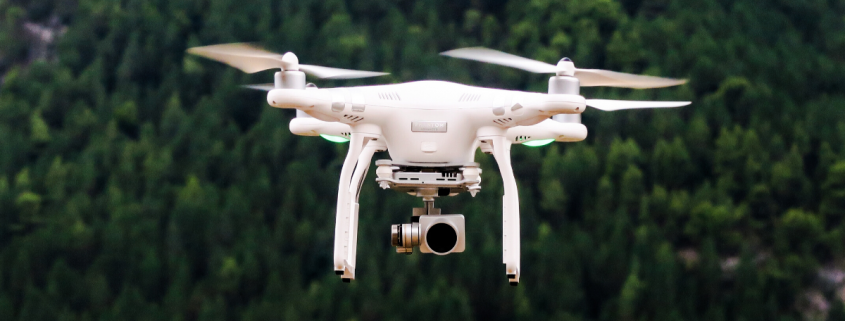Construction companies are embracing drones
Drones have become commercially viable by being used across many different sectors. This is particularly in the construction industry, where advantages include improved project monitoring and the reduction of safety risks.
In the nearby future, the construction industry market is estimated to reach £10 billion and drone use is expected to grow with it. Here, we discuss how drones are affecting the construction industry, assisting with a variety of tasks.
Drones in construction
Drones are being used in all types of spaces, from agriculture to film shoots. But one of the fastest growing industries for their use has been infrastructure development, and more specifically, construction.
Drone adoption in this sector is widely thanks to several major businesses being early adopters, including Kier, Costain, Mitie and Balfour Beatty.
How are drones used on a site?
Some of the benefits of drone use on site include providing easier access to large traverse sites in addition to complex and/or tall structures. Drones can be used to map out construction sites, gather aerial data, and to take images to monitor progress and for inspections.
Building Information Modelling (BIM)
The process of creating and managing everything during a lifecycle of a construction project is known as BIM. This process provides a shareable digital catalogue of all aspects of a construction project, which can be altered and updated. Some go as far as to call this development in the construction industry a digital revolution.
Aside from BIM, drones are also being used in other ways on site.
Automated construction site
DJI, a leading Chinese manufacturer, made the largest ever commercial drone order in spring 2018. It built a partnership with Skycatch, a US tech firm. Additionally, a massive construction company in Japan called Komatsu, ordered 1,000 drones to put to use in the monitoring and surveillance of their construction projects.
“Skycatch Explore1” is one specific type of drone used to operate robotic construction vehicles. If this plan is fruitful, it could clear a path towards a construction site that is completely automated.
Market overview
Countries across the globe are investing large amounts of money into new drone technology. There is optimism that drones can affect all types of industries.
Drone use regulations
Our government created new regulations for drone use in spring 2018, in order to improve the overall safety of drone use. They want to look for opportunities for drone use in the business and infrastructure sectors. Additionally, the new regulations aim to ensure that Britain is within the top countries developing drone technologies.
- It will be required to register any drones over 250g.
- A drone pilot must pass a safety awareness test before operating their UAV (unmanned aerial vehicle).
- Apps will be required for drone pilots to guarantee safe and legal flying. This is important, especially for restricted places such as military bases or schools.
- If a drone is suspected to be used in any unsafe operating or criminal offences, the police have the right to ground that vehicle and seize any parts for evidence.
- No drones may fly around an airport, nor can they go over 400 feet.
- To help drone pilots comply with guidelines, there will be geofencing development through a government, CAA and the National Air Traffic Service.
To conclude
There is no question that drone use is greatly increasing and that they can have a huge impact on industries across the globe. Construction companies in particular will benefit from the use of drones in their projects.
Around the world and in the UK, we’re going to see more and more sectors embracing the use of drones.


 Bentinck House
Bentinck House


